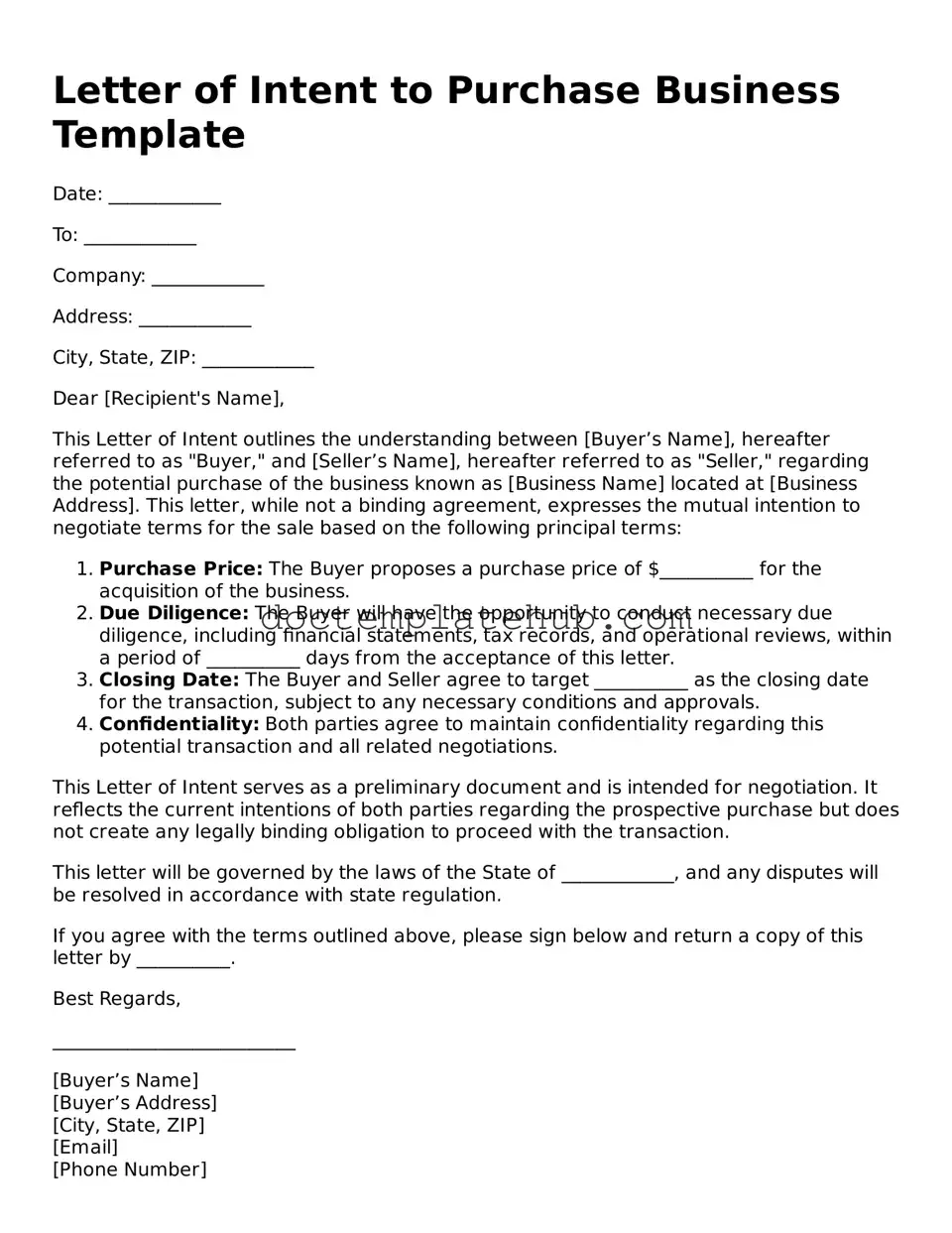The Letter of Intent (LOI) to Purchase Business is often compared to a Memorandum of Understanding (MOU). Both documents serve as preliminary agreements outlining the intentions of the parties involved. An MOU typically details the terms and conditions of a potential deal, much like an LOI, but it may also include a broader scope of collaboration beyond just the purchase. While an LOI is more focused on the purchase transaction, an MOU can address multiple aspects of a partnership or agreement, making it a versatile tool for negotiation.
A Purchase Agreement is another document similar to the LOI. This legally binding contract is executed after negotiations are complete and outlines the final terms of the sale. While the LOI expresses the intent to buy, the Purchase Agreement solidifies the deal with specific details, such as the purchase price, payment terms, and closing date. The LOI can serve as a precursor to the Purchase Agreement, setting the stage for the final negotiations.
An Offer to Purchase is closely related to the LOI as well. This document is a formal proposal made by a buyer to a seller, indicating the buyer's desire to acquire the business. Like the LOI, it outlines key terms such as price and conditions. However, an Offer to Purchase is typically more detailed and may include contingencies that must be met for the sale to proceed. The LOI, on the other hand, may be less formal and more focused on expressing interest.
A Non-Disclosure Agreement (NDA) often accompanies the LOI during business transactions. While the LOI outlines the intent to purchase, the NDA protects sensitive information shared between the parties. This document ensures that any proprietary information disclosed during negotiations remains confidential. The NDA is essential for maintaining trust and safeguarding business interests, especially when sensitive data is involved.
The Term Sheet is another document that bears similarities to the LOI. A Term Sheet outlines the basic terms and conditions of a deal, serving as a summary for further negotiation. Like the LOI, it is not legally binding but provides a framework for the discussions to follow. The Term Sheet may include aspects like valuation, payment structure, and timelines, helping both parties align their expectations before formalizing the agreement.
A Letter of Intent to Lease can also be compared to the LOI for purchasing a business. While the LOI focuses on the acquisition of a business, the Letter of Intent to Lease outlines the intentions of the parties regarding the leasing of property. Both documents express a desire to move forward with a transaction, but the leasing letter specifically addresses terms related to rental agreements, such as lease duration and rental rates, rather than the purchase of an entire business.
The California Homeschool Letter of Intent form is a crucial document for parents or guardians who choose to educate their children at home. This form serves as an official notification to the relevant school district that a child will be homeschooled, instead of attending traditional public or private schools. Ensuring this form is properly filled out and submitted is essential for compliance with California's educational statutes. For more information, you can visit https://onlinelawdocs.com/california-homeschool-letter-of-intent.
Finally, a Business Plan can be seen as a document that complements the LOI in the context of purchasing a business. While the LOI articulates intent, a Business Plan provides a comprehensive overview of how the buyer intends to operate and grow the business post-acquisition. It includes market analysis, financial projections, and strategic goals. This document can be crucial in convincing the seller of the buyer's capability and vision, thereby reinforcing the intent expressed in the LOI.
